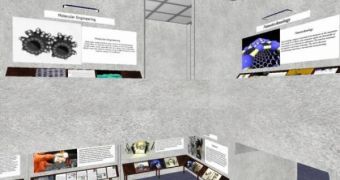Brain-computer interfaces (BCI) may now seem like a thing of the future, but they are a lot closer than any of us thinks, according to European scientists. For quite some time now, they've been working on a way of making thoughts control human actions in a virtual environment, and their accomplishments thus far have been amazing. They have been recently able to present a new type of interaction, one in which the user's own brainwaves are used to infer what the person wants to do, and the computer does it. No keys are pressed in the process, and the individual only watches a series of flashing symbols on a screen.
The technology was already demonstrated, in its brute form, at the CeBit technology show, held in Hanover this March. It possesses a huge range of possible applications, such as controlling the smart appliances that will populate the Digital Living Room, a concept much hypothesized by architects. Basically, it refers to transforming one's basic living space into an area where all their multimedia devices are located – TV, computer, DVD or BluRay player, and so on. Controlling them at the same time would be difficult the old-fashioned way, so the push now is to devise a “neural” way of doing it.
“The BCI lets people turn on lights, change channels on the TV or open doors just by thinking about it,” the CEO of g.tec, the Austrian medical engineering company that has developed the new system, Christoph Guger, said. PhysOrg reports that the new system could also be used by people who are disabled or paralyzed, making their interactions with objects around them a lot simpler. The research has been part of the Presenccia project, which is funded by the European Union and unites g.tec with many other universities and research institutes on the old continent.
“It has a kitchen, bathroom, living room, everything a normal home would have. People are able to move through it just by thinking about where they wanted to go,” Guger added about the virtual space g.tec has designed. The way users accomplish movement is by performing a series of test runs, during which time an electroencephalograph attached to their head determines which neural activity patterns are associated with which desire. After that, the system “works like a charm.”
“A virtual environment could be used to train a disabled person to control an electric wheelchair through a brain-computer interface. It is much safer for them to learn in VR than in the real world, where mistakes could have physical consequences,” the Coordinator of the Presenccia project, Mel Slater, concluded.

 14 DAY TRIAL //
14 DAY TRIAL //